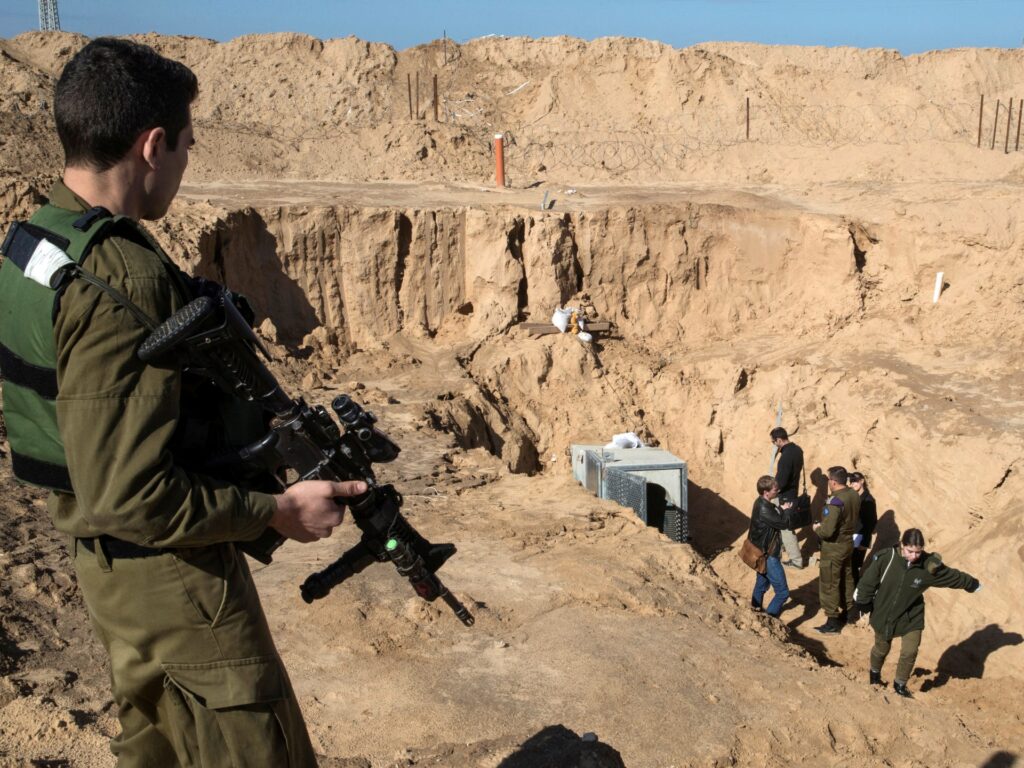While everyone is trying to better understand the Israeli Prime Minister’s announcement that he may allow “small tactical pauses” to let hostages out or help in, the fighting in Gaza continues.
Calls for a ceasefire, a pause or any other term that might appear in the tedious international political horse-trading are growing on all sides, but Benjamin Netanyahu and his hawkish unity government are striving to avoid losing momentum, fearing that once stopped, their Gaza offensive would be halted. much harder to restart.
In the days immediately following the October 7 Hamas attacks, shocked Israelis united behind calls for revenge, rallying behind the government and army. But, a month later, that unity at all costs may have been shaken by scenes on the front lines where the Israeli army has little to show for it in terms of victory and the destruction of Hamas.
Relentless aerial bombardments have killed more than 10,000 Palestinians and caused almost incredible levels of destruction, but the number of Hamas fighters eliminated is unknown. Even if these attacks had killed 1,000 Qassam Brigade fighters, which is impossible to prove, the ratio should worry many Israelis: a huge military effort for little military gain.
The number of casualties from Israeli fighting is still low, around 30, which is considered acceptable, but how will society react if it starts to increase? Many more Israeli soldiers could die as invading troops surrounding Gaza City – who have cut it off on the surface from the southern part of the Strip – take the battle underground, in Hamas’s feared tunnels.
Digging and counter-digging
Digging tunnels for military purposes is a concept that dates back to early human settlements and has never ceased to be used. Until the invention of gunpowder, tunnels were used to enter defended castles or escape from besieged cities without breaking. Gunpowder gave tunnel boring machines the ability to set off large explosions beneath enemy positions, followed by massive attacks that would take territory.
This concept culminated in World War I, with Britain and Germany on the Western Front and Italy and Austria-Hungary in the Alps digging and counter-digging, blasting over 1,000 tons at both during the largest explosions.
While tunnels declined among evenly matched armies after World War I, they found new life when used by underdogs in asymmetric warfare. China used tunnels to defend against Japanese invasion in the 1930s.
Japan, recognizing their effectiveness, also began digging. Applying modern digging and defense techniques, Japan made extensive use of tunnels to defend the occupied Pacific islands against Allied invasion, inflicting heavy losses on U.S. Marines and Allied forces, greatly disproportionate to the number of defenders.
A generation later, the Vietcong fighting the United States in Vietnam used tunnels to go around, or rather under, their enemies, escape encirclement in one location, and launch surprise attacks in others. Their tunnel network was extensive: in the southern Cu Chi region alone, the U.S. military verified more than 320 km (200 miles) of underground communications. These 60-year-old figures make Palestinian claims of 300 to 500 km (186 to 310 miles) of tunnels under Gaza plausible.
Bantams, rats and weasels
Every nation or army that had to fight an enemy using tunnels quickly realized that regular soldiers were almost useless for this specialized task. They were not skilled diggers and many of them felt uncomfortable in a claustrophobic environment, dark and damp, with stale air. In 1914, Britain began employing miners and training them for military duties.
Then he created special bantam troops composed of soldiers whose small stature, less than 160 cm (5.25 feet), excluded them from service in regular units. They did much better than the usual troops, as did the “Tunnel Rats,” specialists in clandestine warfare that the United States used in Vietnam.
When it first discovered and studied the Gaza tunnels during the first Intifada from 2000 to 2005, Israel realized that the danger of an underground war would increase and began to create units adapted to this role, starting with the combat engineers, known as Yahalom.
Combat engineers quickly realized that, despite their technical skills and specialized equipment, even more focused, armed and trained troops were needed.
In 2004, the Weasels (Samur), the first Israeli tunnel warfare commandos, appeared. The specialists come from the engineering corps and were trained in clandestine assault techniques by the Sayeret Matkal commandos. These will certainly be the first Israeli troops to enter Hamas tunnels.
Extension of the tunnels under the Strip
The tunnels under Gaza predate Hamas – in the 1980s, when they were first dug under the Egyptian border for smuggling purposes. Palestinians in Gaza discovered that except for the narrow belt along the coast where the soil was sandy and unsuitable for digging, the rest of the land in Gaza was rich in clay, easy to dig and requiring no digging. generally no complex supports.
Over time, the Palestinians realized that the tunnels could have military use and used tunnel boring machines to expand the network under Gaza.
When Hamas took power, the effort was given a strategic role and expanded. Most of the tunneling was carried out by local civilian workers, who reportedly received above-average pay for the grueling work.
Operating under territory it controlled, Hamas did not have to worry about one of the greatest perils of building tunnels under or near the enemy: being located by noise or vibration. digging. Freed from this constraint, they would have worked quickly.
When it attacked Gaza in 2014, Israel was stunned by the extent of the tunnels, believed to have exceeded 100 km (62 miles), and their sophistication. She realized she had to accelerate her clandestine war preparations.
Tomorrow: what the underground war in Gaza will look like, point by point analysis

